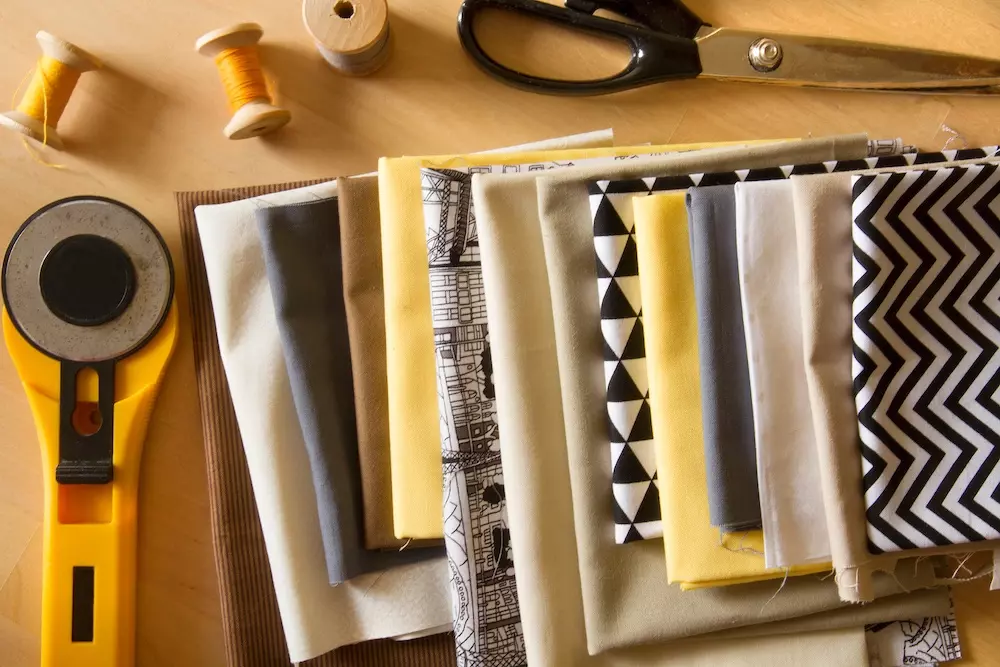The Best Cutting Tools for Sewing
2023-05-23
Most sewists consider certain tools — including multiple types of needles, plenty of thread, and a variety of fabrics — to be necessary components of every sewing toolkit. However, sewists often overlook the importance of tools to help them cut during their sewing projects.
Cutting Tools You Need in Your Sewing Kit
Cutting tools are just as important as any other sewing notion when you’re creating a new garment or item with your sewing machine. They can be used to cut fabric to the proper size or even correct mistakes made during the stitching process.
Here are a few of the most important cutting tools to include in your sewing kit.
Fabric Scissors
In the realm of cutting tools for sewing, you can’t get more basic than fabric scissors — also known as fabric shears. Fabric scissors are designed to be sharper than standard scissors so that they can cut through all kinds of fabric. Many sewists need to use them to cut through multiple pieces of fabric at once.
Standard scissors are often too dull to cut fabric properly without leaving jagged edges. Fabric scissors are large and sharp, which is why they should be stored in a safe place. When you’re choosing a pair of fabric scissors, make sure to select one with a comfortable handle that suits your hand well. This is especially important if you spend many hours at a time working on sewing projects.
Thread Cutters
Thread is one of the smallest and most delicate items used during the sewing machine process, which is why a pair of fabric shears or even standard scissors could feel cumbersome and difficult.
Thread cutters are specially designed to be very small and precise, allowing them to snip your thread at exactly the right spot. Many sewists use them to clip extra thread at the ends of stitches, which creates a more polished look for projects. Be careful when using thread cutters, though, as they are very sharp.
Standard Scissors
Standard scissors may not be the right choice for cutting fabric. However, having a pair of standard scissors around could be useful for certain needs.
For example, you should use standard scissors if you are following a paper pattern for your sewing project. If you use your fabric shears for cutting paper, you could dull the blades and make them less useful for their actual purpose of cutting fabric.
Rotary Cutters
Fabric shears are great for cutting through all kinds of fabric. However, since their movement is entirely controlled by the sewist, they require a very steady hand if you need to cut a perfectly straight line. For those who want more assurance that their lines will be straight, rotary cutters are a very helpful tool.
Rotary cutters are primarily used to cut straight edges while quilting, but they can be applied for the same purpose in a variety of other projects. Additionally, rotary cutters can cut on a curve, which helps create curved lines that are perfectly symmetrical. If you use your rotary cutters often, make sure to keep spare blades on hand, as they can become dull and less effective over time.
Seam Rippers
Mistakes can happen during the stitching process, whether caused by you or a malfunctioning sewing machine. If you have to open a seam back up, seam rippers are the best tool for preventing unnecessary damage to your fabric. Keep multiple seam rippers on hand so you can replace them when they become dull.
Embroidery Scissors
If you do detailed work such as embroidery with your sewing machine, you’ll need some special tools to create the perfect finished product. Embroidery scissors are crucial for cutting away stray threads from embroidered sections that are too small to be cut by sewing scissors.
These small, sharp shears are just as precise as thread cutters, but they are made with a handle so you can maneuver them along your project and better control what you’re cutting.
Shop Sewing Kit Tools and Accessories at GoldStar Tool
The right cutting tools are essential for success as a professional sewist or even a DIY crafter. Find all kinds of cutting tools and more sewing machine accessories at GoldStar Tool.





